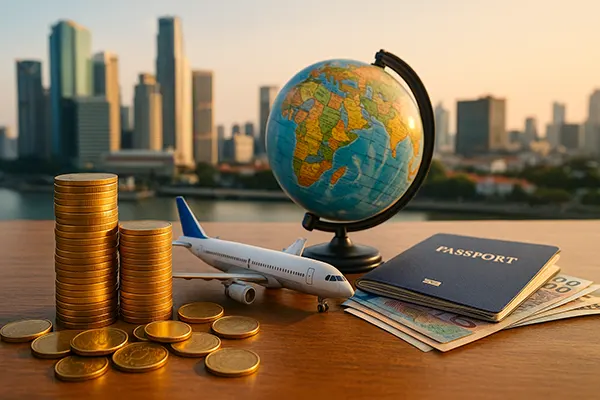
Minimum Investment Thresholds Around the World in 2025
Investing internationally in 2025 requires not only financial awareness but also an understanding of entry requirements that vary by country. Whether you’re an aspiring investor looking to break into a new market or simply planning to diversify your portfolio, it’s vital to know the minimum capital thresholds that grant access to investment products or residency schemes. This article examines how much money is needed to start investing across a range of global economies—from affordable emerging markets to high-barrier financial hubs.
Europe: From Accessible Entry to Elite Investment Tiers
European countries present a wide spectrum of investment thresholds. In countries like Portugal, the minimum amount for a Golden Visa via capital transfer or real estate purchase is approximately €250,000–€500,000. However, some regions such as Latvia or Greece allow entry from €250,000, mainly through property acquisition.
Germany and France offer fewer residency routes tied to passive investments, but investors can still engage via entrepreneurial ventures. The average threshold for establishing a business in these economies ranges from €30,000 to €100,000, depending on sector and location.
In Switzerland, financial entry points are among the steepest. Investment-based residency typically requires capital exceeding CHF 1,000,000, alongside stringent due diligence and economic benefit assessments.
EU Start-Up and Innovation Investment Routes
Several EU nations, including the Netherlands and Estonia, promote innovation visas where the entry threshold may be lower than traditional investment programmes. Estonia, for instance, offers residency via a start-up route with a recommended investment of €16,000–€65,000, targeting tech entrepreneurs.
The Dutch Start-up Visa also supports early-stage companies, with required capital around €50,000–€60,000, provided an approved facilitator supports the business.
These schemes are not passive investments but require operational involvement and innovation-driven business models. They are appealing for investors interested in digital and high-growth sectors.
Asia: Rapid Growth, Mixed Requirements
Asia offers dynamic opportunities for investors, although entry costs and conditions vary greatly. In Singapore, the Global Investor Programme requires individuals to invest at least SGD 2.5 million (~USD 1.8 million) in a new or existing business or fund approved by the Economic Development Board.
Japan allows business start-up residency with a minimum capital requirement of ¥5,000,000 (~USD 32,000), making it relatively affordable compared to its regional peers. However, passive investment schemes are limited.
In contrast, the Philippines and Indonesia offer accessible real estate and business investments. The Special Investor’s Resident Visa (SIRV) in the Philippines has an entry requirement of just USD 75,000 invested in approved sectors.
China and India: Closed or Conditional Doors
China remains relatively closed for foreign direct investment unless it’s through a joint venture model or large enterprise. The minimum threshold for company registration may be as low as CNY 100,000, but regulatory barriers are high.
India allows foreign investments under automatic routes in many sectors, but for residency or significant economic rights, larger sums—usually above INR 10 million (~USD 120,000)—are necessary. Business visas often require intent for job creation or sectoral contribution.
Neither country offers conventional Golden Visa programmes, making them more suited for active investors or strategic corporate expansion.

Americas: Established Markets with High Entry Points
The United States continues to attract investors through its EB-5 Immigrant Investor Programme, which currently requires USD 800,000–USD 1,050,000, depending on the location and nature of the investment. The capital must also result in the creation of ten full-time jobs within two years.
Canada’s investment pathways include the Quebec Immigrant Investor Programme (paused until 2026) and entrepreneur-focused routes in various provinces. Typical capital thresholds range from CAD 200,000 to CAD 600,000, with regional variations and employment obligations.
In Latin America, countries such as Colombia and Mexico provide more affordable investment entry. For example, Colombia allows residency through real estate investment from COP 400 million (~USD 100,000), while Mexico sets the bar at approximately USD 200,000 for permanent investment residency.
Brazil and Chile: Opportunities in Emerging Markets
Brazil’s residency-by-investment scheme starts from BRL 500,000 (~USD 100,000) for job-generating businesses or R&D-focused enterprises. For high-impact sectors, the threshold drops to BRL 150,000 (~USD 30,000).
Chile, known for its stable economy, has no fixed capital threshold for investment residency but evaluates applications on the basis of business plans, economic contribution, and feasibility. An average capital injection of USD 80,000–USD 120,000 is advisable for acceptance.
Both countries offer mid-level barriers to entry but favour active involvement in productive industries over passive financial placement.
